Having a solid sales strategy and implementing a sales methodology is useless if your team doesn't execute them effectively.
That’s where sales playbooks come in. These powerful documents bundle every pitch, strategy, customer profile, and case study into a digestible format.
The result? Your sales reps have everything they need to find prospects and smash sales goals.
In this guide, we’ll introduce the concept of a sales playbook, show you what they typically cover, and take you step-by-step through creating your own.
Ready to give your team direction? Then, let’s dive in.
Table of Contents:
- What is a sales playbook?
- What are the benefits of a sales playbook?
- What is included in a sales playbook?
- A step-by-step guide to creating your own sales playbook
- Sales playbook template and examples
- What’s next?
What is a sales playbook?
A sales playbook is a sales enablement guide documenting your sales process and offering guidelines on prospecting, lead qualification, sales pitches for specific situations, and more.
A sales playbook includes the ideal customer profile, customer pain points, product and company value proposition, case studies, cold calling/emailing social selling scripts, and so on.
It can be seen as a guidebook that answers the question — “How will our sales team function and close new deals?”
What is a sales play?
Sales plays are tutorials for specific situations during the sales process — making them a key part of every sales playbook.
Documenting the sales plays for tricky situations – pricing discounts, objections, or closing a deal — makes it easier for sales reps to move deals forward without spending too much time coming up with new strategies.
What are the benefits of a sales playbook?
Documenting your entire sales process might seem like a lot of effort, but you’ll find it worthwhile. A sales playbook can be a transformative document that fosters a sense of camaraderie among your team and helps reps, new and old, sell more.
It aligns your sales team
A sales playbook ensures that every member of your team is working towards the same goals using the same process and tactics that have been proven to convert.
If one rep finds a particularly powerful message or pitch, adding it to your sales playbook opens it up for everyone — allowing the success of one rep to scale to the entire team.
A sales playbook also makes it easier for managers to provide training and guidance. When you outline sales processes in detail, it’s easy for managers to spot reps going off-path and point them in the direction of resources (whether that’s plays or scripts) that can help.
It improves onboarding
A sales playbook is one of the best ways to rapidly accelerate the onboarding process and increase the productivity of new hires.
That’s because it acts as a step-by-step guide to who your company is and the way your sales team operates. This lets new hires quickly understand the practices and principles they need to succeed with your company. It also shows new hires your level of commitment and may make them more likely to stick around even if they don’t get off to the best start.
That’s not all, though. A sales playbook also provides a structured training experience for existing reps who can browse your playbook at their leisure or during training hours, reminding themselves of tips, tricks, and best practices.
It helps your team exceed sales targets
Ultimately, a sales playbook should make your team more effective and help reps exceed sales targets — something 34% of respondents in a HubSpot survey said was their main priority.
A sales playbook will lay out exactly what reps need to do at every stage of the buyer’s journey and centralize sales collateral and other assets. This means reps spend less time searching for information and more time selling.
What is included in a sales playbook?
Whether you’re building a sales playbook from scratch or revising the one you already have, here are the key components every playbook needs:
Company overview
A great sales playbook covers everything reps need to know, starting with your company. A company overview section should include details about the company’s goals, values, business strategy, brand story, and sales organization structure.
This will be vital information for new reps who are getting to grips with their new organization and a nice refresher for existing employees. But don’t just spout stale facts. Add some color to make your company overview entertaining and motivating. Get your employees excited about the problems your company solves and make them excited about going to work.
Product overview
The second thing you should include in a sales playbook is detailed product descriptions. Reps should have in-depth knowledge of your product, how it works, and what problems it solves. This should also include the cost of your products.
In-depth product knowledge can help reps show prospects how your product will solve their problems and stop them from over-promising.
Elevator pitch
An elevator pitch is a 30-second summary introducing your company, value proposition, and how you can help a prospect. This will be one of the shortest sections of your playbook but also one of the most important.
A succinct and enticing sales pitch allows your reps to get their foot in the door on every sales call. If 30 seconds is all they have before a rep hangs up, this is the key information you want them to get across.
You probably have an elevator pitch already, but make sure yours highlights the problem your product targets, clearly describes how it provides a solution (ideally with an example from an existing customer), and includes a USP or two that differentiate you from well-known competitors.
If you don’t have an elevator pitch yet, have your sales reps pitch you and choose the best one.
Buyer personas
Buyer personas and ideal customer profiles are semi-fictional descriptions of people and companies that help your team understand the prospects they should target.
A buyer persona is a detailed description of the ideal person your reps should be talking to. It will list their job role, the industry they work in, their typical pain points, and their goals.
An ideal customer profile, on the other hand, describes the type of company reps should target. This will include the industry or sector, the size of the company, and its ideal revenue.
You can see the difference between the two in the diagram below:
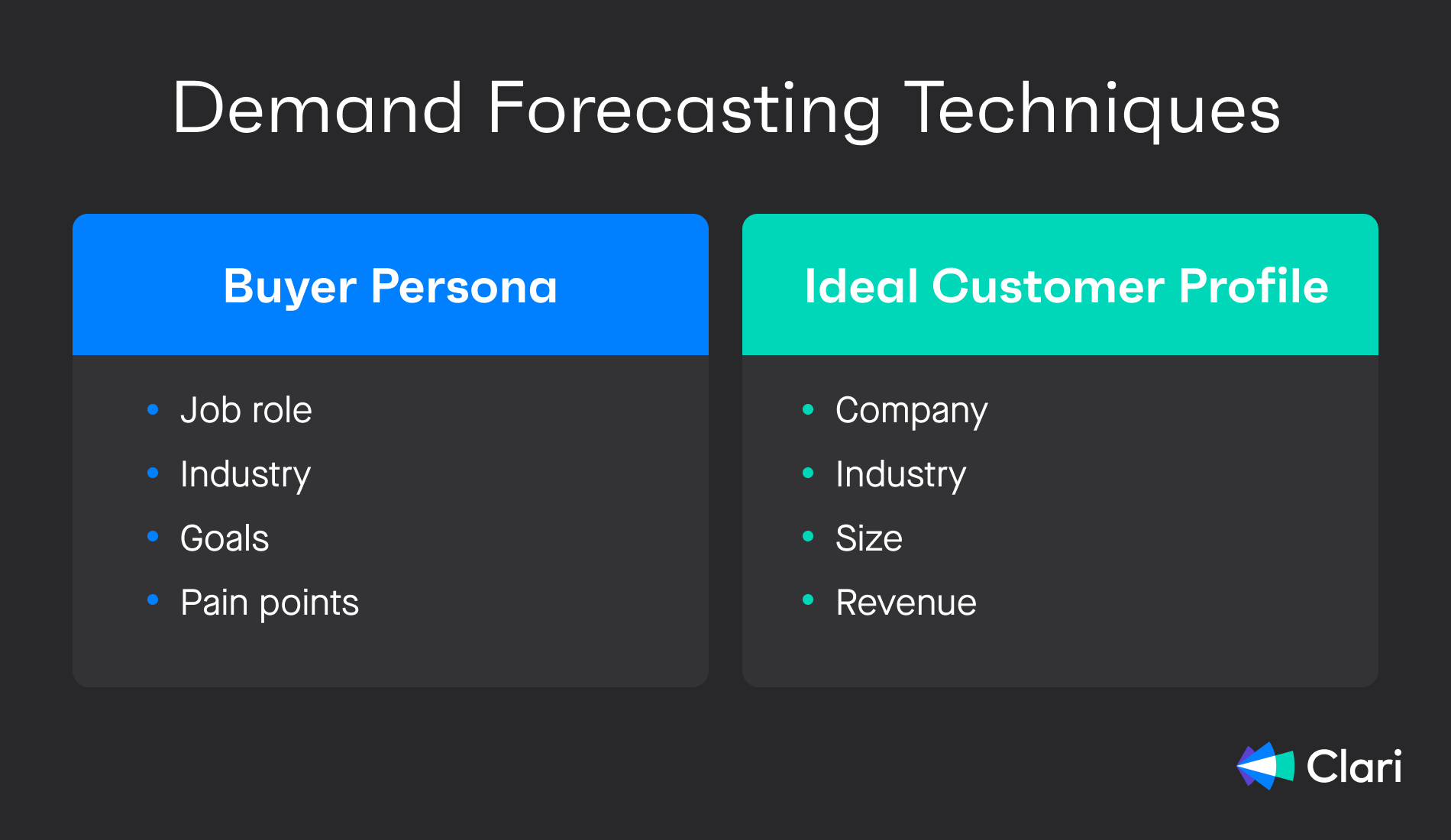
Buyer personas and ideal customer profiles should streamline prospecting, allowing reps to quickly filter potential targets and stop them from wasting time on unsuitable prospects.
Sales methodology
If your business follows a sales methodology like the Miller Heiman sales methodology, SPIN, Challenger Sales, Sandler Selling, or a combination of different methodologies, then it will be important to explain what the methodology is and how it works in your sales playbook.
New reps may not understand the intricacies of your methodology, so spelling it out in your playbook will help them get up to speed.
It won’t do any harm to remind existing reps of the methodology they should be following, either. In fact, it will ensure they continue to deliver a consistent experience across every touchpoint.
Sales process
Your sales process is a detailed overview of the steps reps must complete to move prospects from an MQL to a closed deal. This should include details on various stages, best practices, and qualifying criteria for prospects to move down the sales funnel.
Make sure to include any company- or industry-specific definitions that aren’t widely known. The last thing you want is new reps quizzing your managers over every acronym.
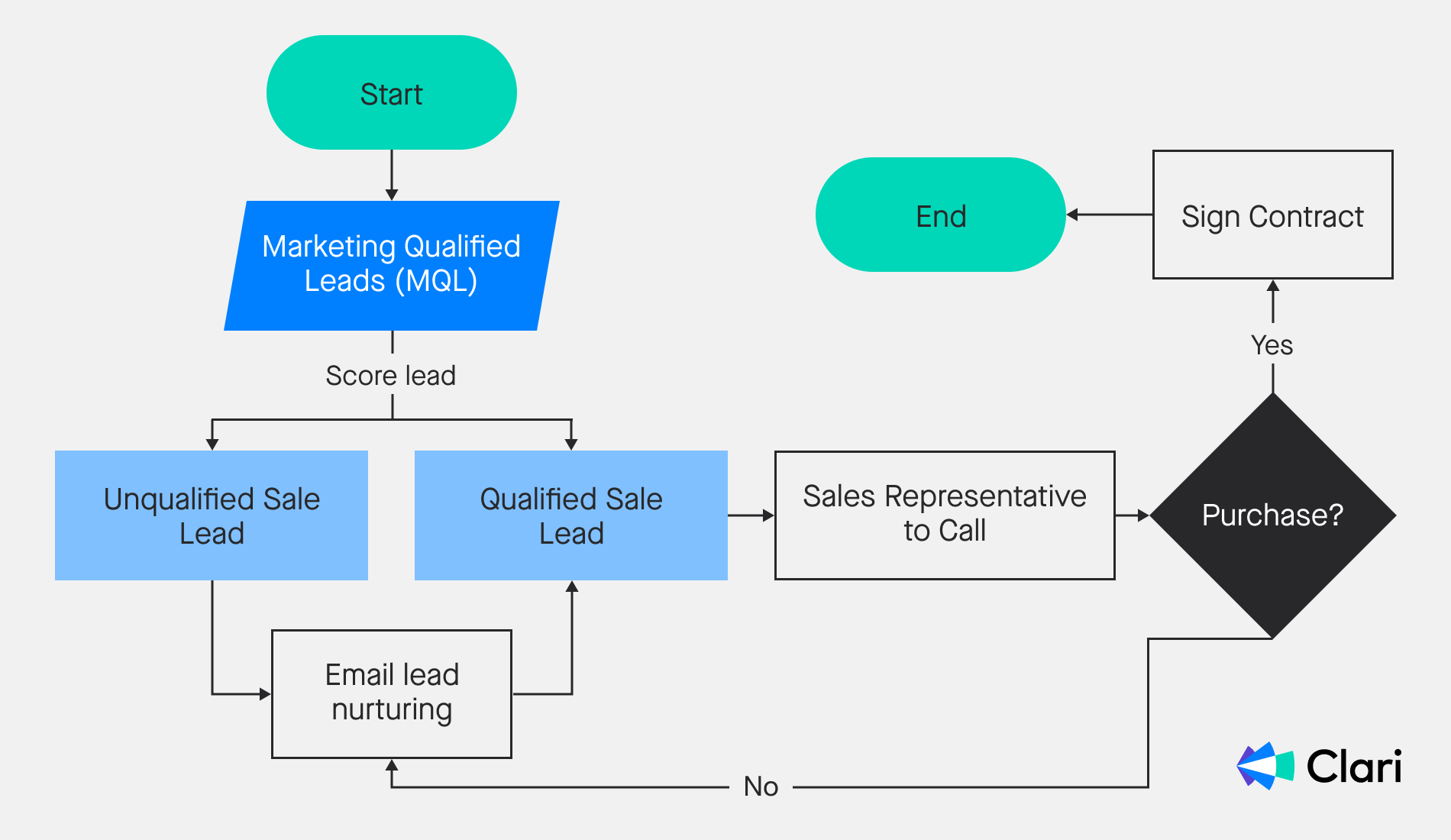
The sales process should also outline the roles and responsibilities of each member of the sales department from the moment a lead gets handed over from marketing to the second it closes. This will be particularly important in large sales teams where SDRs are only responsible for prospecting.
The plays
Your sales playbook should arm reps with all the collateral they need to persuade prospects throughout the sales process. This should include the following plays:
- Pricing play: This play should cover how to talk about pricing and what kinds of discounts sales reps can offer.
- Prospecting play: In this play, you can list the various successful prospecting approaches. You can group them per the communication channel, such as LinkedIn, email, Twitter, etc.
- Lead qualification play: This play should include discovery questions that uncover pain points, motivations, existing technologies, and the lead’s role in the decision-making process. The play should also explain what factors should be considered to qualify leads and move them to the next stage.
- Product demo play: This play should cover when and how sales reps should offer a product demo, what language they should use, and which capabilities should be covered in the demo.
- Use case play: Use cases are a great way to help sales reps connect with prospects and speak their language. So, this play should list all possible scenarios that help the prospects visualize how to use your product.
- Winning sales pitch play: You should include transcripts, recordings, and call scripts of the most successful sales pitches in the sales playbook.
- Existing clients play: Including customers worth bragging about can help establish social proof and credibility. So, the playbook should cover a list of customers that can be name-dropped, along with details that can be divulged.
- Objection handling play: Preparing your sales reps to tackle objections is essential to help them move deals forward. So, include a list of objections that are likely to come up and ways to deal with them.
- Follow-up play: 80 percent of successful sales require at least five follow-ups. This play should include ideas and guidelines on follow-up calls, messages, and meetings.
- Closing play: This play can offer examples of moves that have helped nudge prospects gently toward closing a deal or making a decision.
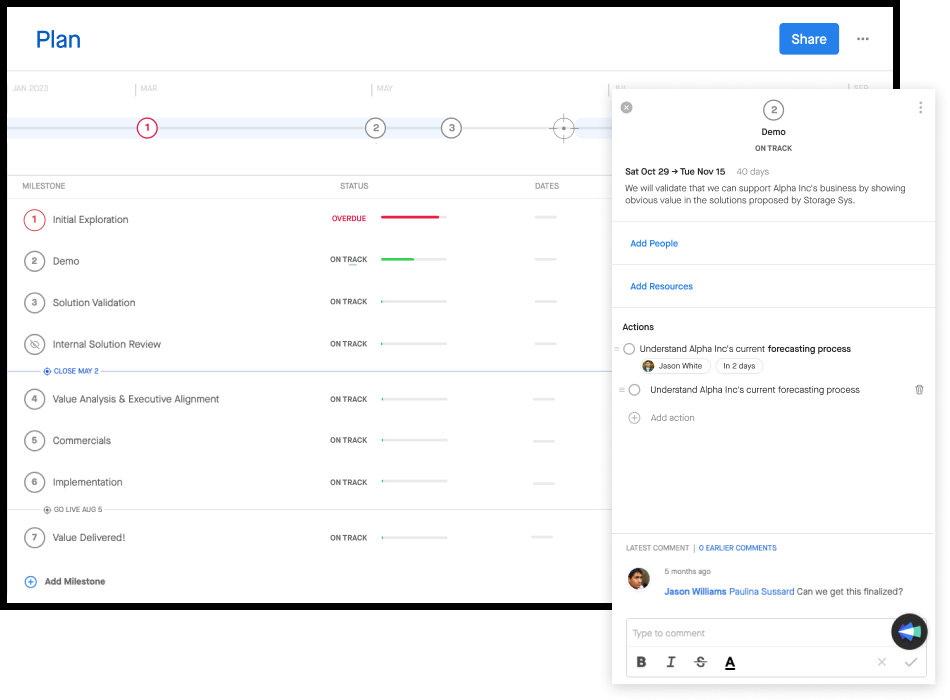
These tutorials should be readily available from a centralized platform that allows reps to quickly share sales collateral with prospects. That’s why a digitized sales playbook is so important to align modern teams.
Sales targets and KPIs
It’s important for reps to understand the sales metrics and KPIs you use to measure their performance, whether that’s average calls per day, leads generated, follow-ups, deal size, win rate, or others. This will help reps understand what you expect of them and help them monitor their progress.
At the same time, you should outline reps’ compensation plans and commission structures in this section. This information is highly motivating for your reps, so make sure you outline exactly what they can expect to make when they exceed their targets.
Messaging for email, text, calls, and social media
This is one of the most important parts of your sales playbook for new and existing reps. Nailing messaging is key to moving prospects through the pipeline and, ultimately, closing deals.
But it’s hard coming up with powerful messages from scratch. So, use this section to provide clear and effective scripts for prospecting, nurturing, negotiations, and closing leads via emails, calls, and other communication channels.
These can take the form of full-blown scripts or sales battle cards that reps can refer to on calls or before writing an email. Just make sure you have messaging examples for the breadth of sales channels your reps use, including email, LinkedIn SMS, and more.
Messaging tone and personality
Your marketing team uses a style guide to ensure every campaign and ad they run reflects your company’s brand, image, and tone of voice. Why should your sales team be any different?
Answer: they shouldn’t. Use your sales playbook's messaging tone and personality section to outline how you want reps to come across on the phone. This can include:
- Tone of voice
- Conversation style
- Vocabulary
- Level of persistence
If the previous section guided reps on what to say, this section should cover how they say it.
Other sales enablement materials and resources
End your sales playbook with an organized list of assets and collateral. This is all the content a sales rep would need to further a customer conversation, such as whitepapers, slide decks, case studies, cue cards, training videos, and game tapes.
You should also include all of the sales tools and technologies available to reps, the benefits they provide, and how to use them. The intelligent use of technology can turn good reps into great reps, according to LinkedIn’s State of Sales report, which found top-performing sales reps were far more likely to use sales tools.
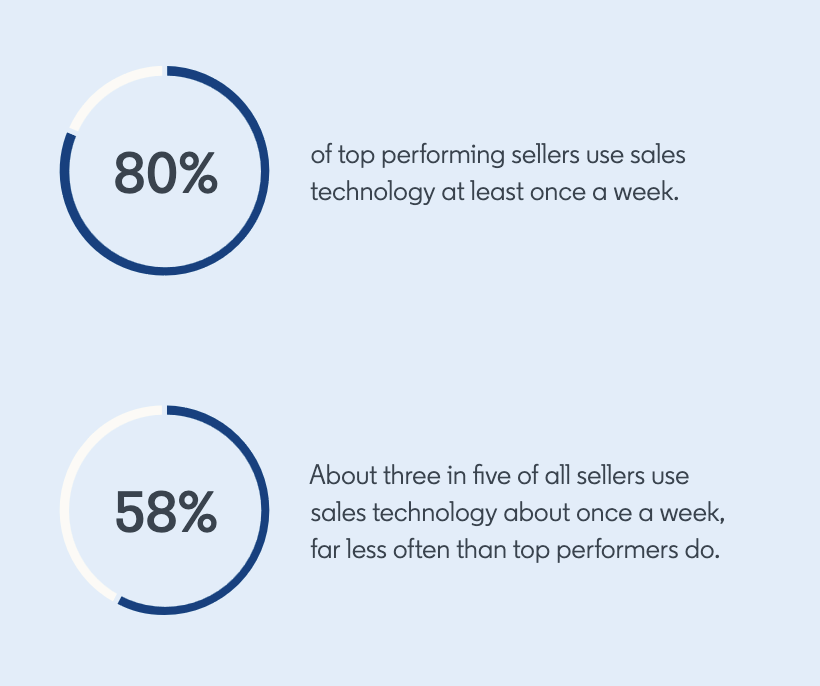
Dedicate a good amount of space to describing how to best use foundational sales tools like a CRM or revenue platform. These are arguably the most valuable tools in your arsenal and the ones reps will use every day, so it’s worth providing reps with tips and tricks to use them efficiently.
A step-by-step guide to creating your own sales playbook
Now you know what to include in a killer sales playbook, it’s time to learn how to build your own. Here’s a step-by-step guide to creating a solid sales playbook for your organization:
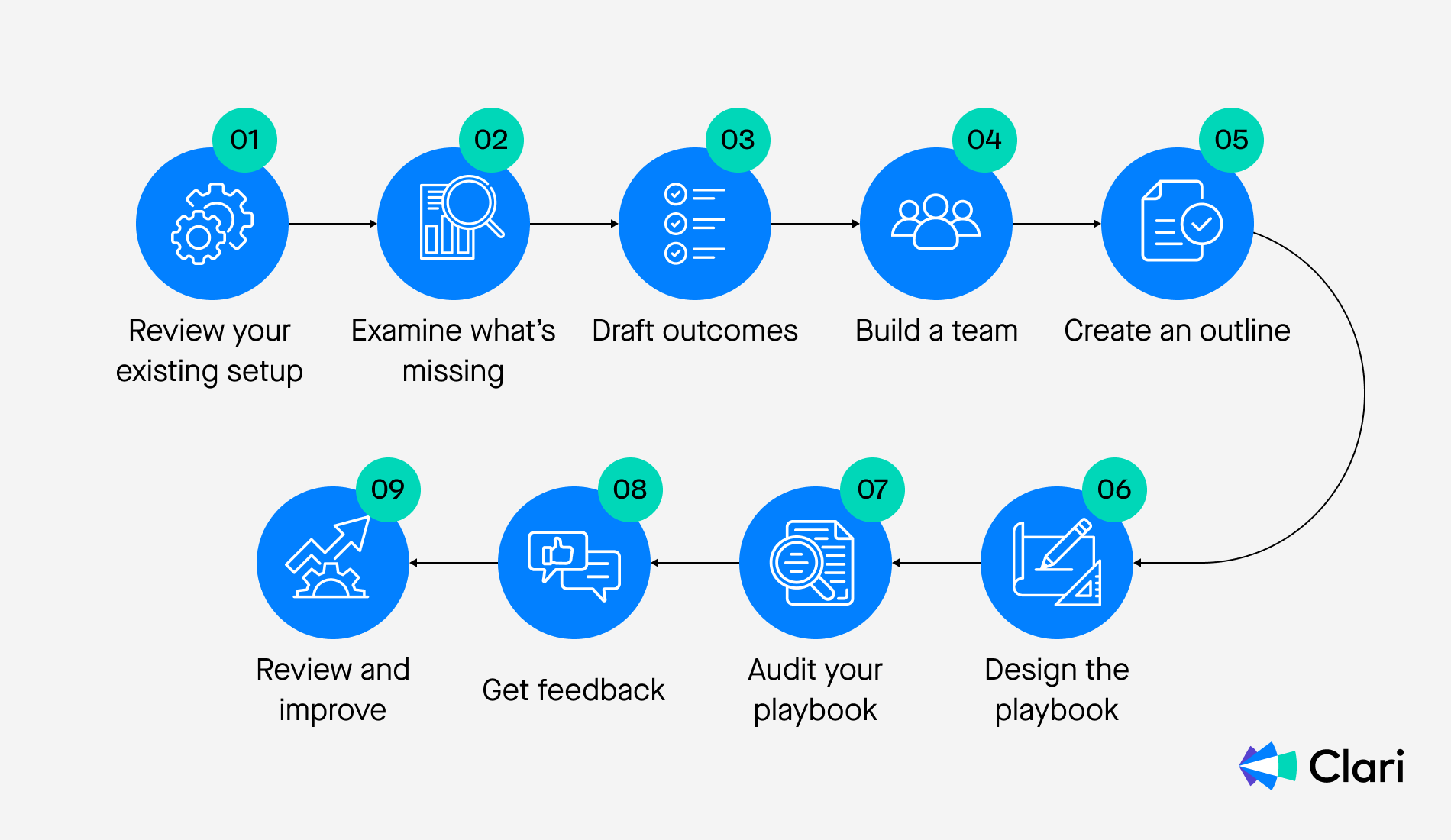
1. Review your existing setup
Before you start writing everything down, it’s well worth spending a couple of hours reviewing your existing sales process to make sure it's running as well as you’d like it to.
This should include a review of your existing sales methodology, sales processes, sales plays, sales organization structure, goals, and KPIs. Ask your sales reps for feedback on how things are going, what they like, and where they’ve had success recently. This can be a good chance to collect the latest and most effective sales collateral and sales plays, too.
2. Examine what’s missing
Once you’ve completed the review, consider what’s currently missing from your sales process or whether anything outdated or dubious could be removed.
This is your chance to get it perfect before documenting everything. As a result, there’s no harm in holding off creating your playbook for a couple of months so you can get all the creases ironed out.
3. Draft outcomes
Next, think about what you want your sales playbook to achieve. This will help you ensure it’s as contextual and actionable as possible — a document that really delivers value to your reps.
Start by thinking about the current goals of your sales organization (whether that’s increasing revenue or expanding to a new market), and then describe how your sales playbook can help you meet them.
Then, consider the challenges your current reps face, the areas of the customer journey you need to focus on most, and your reps’ best sales plays. The more specific and granular your playbook can get, the more effective it will be.
4. Build a team
Put together a team of collaborators and consultants — sales reps, managers, marketing and product team members, and subject matter experts.
The more diverse your team, the better. You want as many perspectives and opinions as possible in order to create a well-rounded document that provides value to your entire sales organization. It will also help you get buy-in from each department and increase the chances your playbook gets shared and adopted across the company.
5. Create an outline
Create an outline for the sales playbook using the information we’ve provided above. This will help you organize your thoughts in a clear and logical manner and ensure you cover all relevant points.
6. Design the playbook
Now, it’s time to flesh out your outline. This will be the most time-consuming part of the process, so clear your schedule and get to work.
Keep things as simple as possible when writing. It’s more important that your playbook is actionable and easy to understand than it is for you to cover the minutiae of your sales process.
Don’t forget about graphics, videos, and other assets, either. Design the playbook with plenty of visuals and an easy-to-comprehend language. This will make your playbook more accessible and easier to scan. Believe us, there’s nothing more off-putting than walls of text. The more diagrams and examples, the better.
7. Audit your playbook
Once you’ve finished the first draft, review your playbook to make sure it’s accurate and actionable. Audit the sales enablement content, training material, and other resources you’ve included and check these are relevant, up-to-date, and accessible.
Give it a read-through yourself, front to back, before sharing it with the wider team. You’ll be amazed at how many opportunities you spot to improve your work after just one reading.
8. Get feedback
Once you’re happy with your draft, share it with your wider team. Give it to your marketing team, sales managers, sales directors, and sales reps, and have them give feedback on accuracy, length, and readability.
Pay the most attention to your reps, though. These are the people who will be using it day in and day out. If they have an issue with it, try to solve it before you implement your playbook company-wide.
9. Review and improve
Your sales playbook shouldn’t be a static document (literally or metaphorically). Instead, make sure to regularly review and improve it as your sales processes change, your product line grows, and your company evolves.
Make time every quarter, six months, or annually to sit down with sales leaders to determine what’s working, what needs to change, and what can be removed. That’s right — it’s just as important to remove outdated concepts and strategies so your playbook can remain manageable and easy to read.
Sales playbook template and examples
While every organization will have a unique sales playbook, the core elements will remain the same.
So, here’s an outline of a sales playbook template that you can fill in:
- Introduction (including mission and goals)
- Company overview (a succinct summary of your organization)
- Product overview (a detailed description with links to other resources, if required)
- Sales process (add links to other resources, if required)
- Buyer personas and customer profiles (these can be real or fictional)
- Key Performance Indicators (KPIs) and sales goals (as well as commission plans)
- Lead qualification criteria (include MQLs and SQLs)
- Sales plays (include any relevant to your sales strategy and process)
- Other resources and sales enablement materials
If you’re still struggling to put pen to paper, check out the following sales playbook examples.
This sales playbook from Cobalt Iron explains how to sell its SaaS platform, Compass. It’s 18 pages long and covers all the information we discuss above.

Venture capital firm Balderton Capital’s B2B playbook provides a step-by-step guide to building a B2B sales team from scratch. While it’s not a sales playbook per se, it does include everything you need to cover in your own document.

What’s next?
A sales playbook is useful in sales rep onboarding and offering inspiration, updates, and guidance to existing sales reps so that they get quick answers in real time.
The sales playbook is an important part of sales enablement as it helps sales reps address their queries and concerns without waiting for a manager’s input.
However, the entire exercise can be tedious and stressful as it involves documenting almost everything about your sales organization. That’s where Clari can help.
With Clari, all sales information is already organized and easily discoverable. It integrates with CRMs and other essential tools in your sales stack.
Clari’s revenue platform can help you bring all sales data regarding the past, present and future in one place. Clari makes it easier for you to create a sales playbook and continuously empowers your sales organization.
Interested in learning more?




